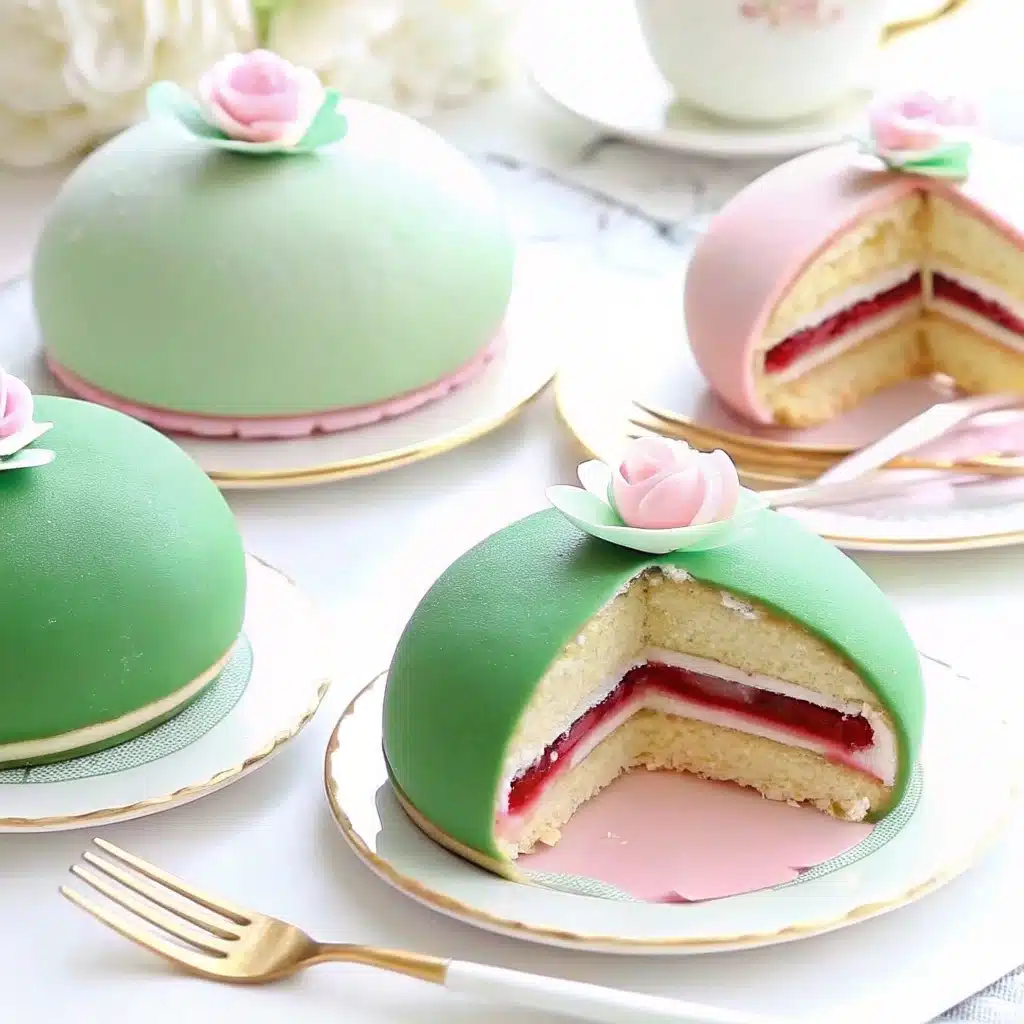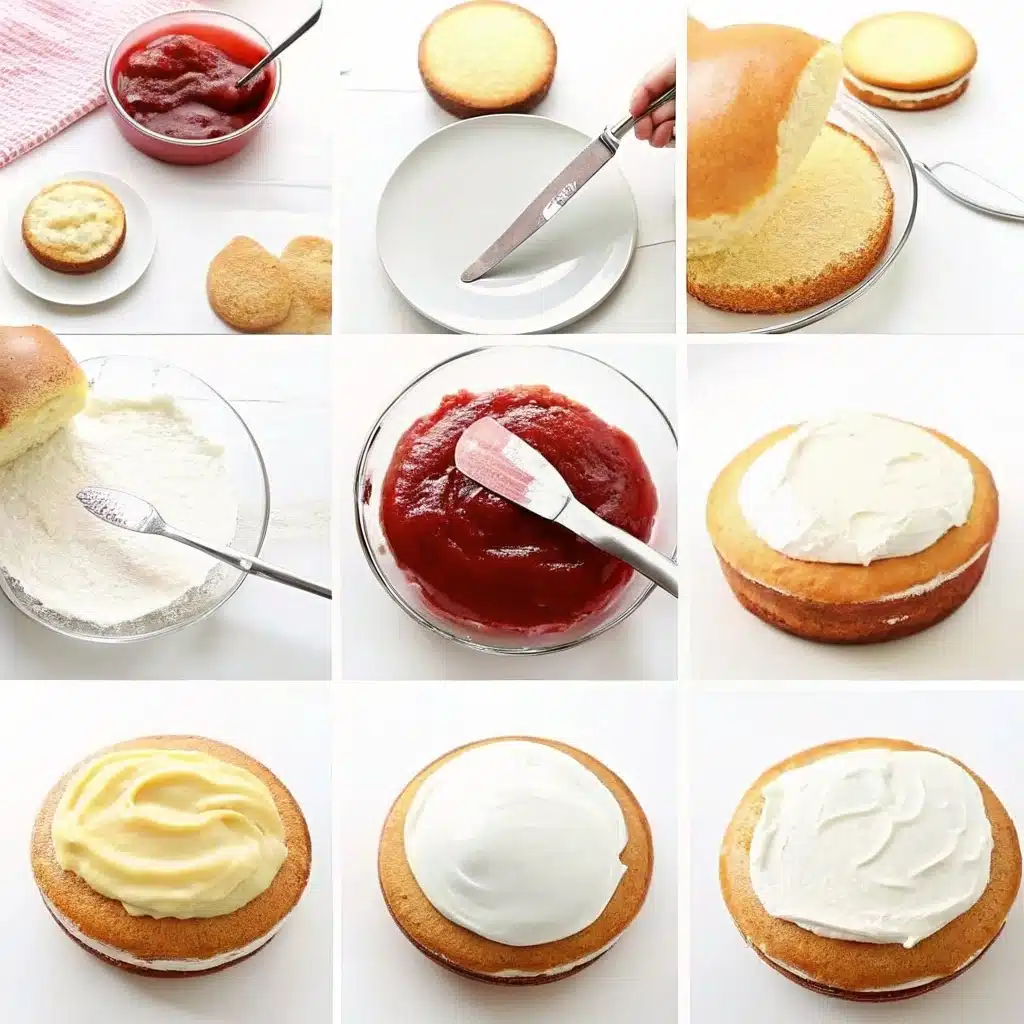There’s something magical about a cake that looks like it stepped out of a fairytale—and that’s exactly what a princess cake does. In this guide, you’ll discover what makes the princess cake so beloved, how to make it from scratch, and how to customize it to suit your celebration. From traditional Swedish styles to pink party variations, we’ll explore the layers, flavors, and finesse behind this royal dessert. Whether you’re planning a birthday or just want to treat yourself, this guide walks you through it step-by-step—with tips, answers to popular questions, and inspiration from other crowd-pleasing cakes.
Table of Contents

What Is a Princess Cake?
A Beautiful History in Layers
When my boys were little, they went through a “Disney prince” phase—complete with capes, crowns, and cake demands. That’s when I stumbled upon the princess cake, a show-stopping dessert with a domed top and pastel green marzipan covering. I had no idea it would become one of our family’s favorite celebrations. It wasn’t just a pretty cake; it had this melt-in-your-mouth magic layered between soft sponge, pastry cream, and fluffy whipped cream.
Traditionally called “Prinsesstårta,” this cake was originally created in Sweden in the early 20th century and named after princesses who adored it. Its look is regal, but its flavor is all comfort—sweet, creamy, and delicate. If you’ve never had one before, imagine a lighter twist on a cream cake with the elegance of fondant but the freshness of whipped cream.
Why Everyone’s Talking About Princess Cakes
What makes this cake stand out is its signature dome. Beneath the surface lies a trio of sponge cake, thick vanilla custard, and airy cream—covered in a thin layer of marzipan. Though the green color is most iconic, pink princess cakes have taken social media by storm lately, often showing up at baby showers and milestone birthdays.
These cakes aren’t just popular in Sweden anymore. In the U.S., they’re catching on thanks to their balance of beauty and flavor. Just like a Boston Cream Poke Cake, the princess cake hides a creamy surprise inside, which keeps people coming back for another bite. Whether you’re baking one for a birthday or a fancy afternoon tea, it offers the ideal combo of nostalgia and celebration.
Traditional Swedish Princess Cake Explained
What Makes a Swedish Princess Cake Unique
The traditional Swedish princess cake (or Prinsesstårta) isn’t just a cake—it’s a national treasure. What sets it apart from other layered cakes is the combination of textures: soft genoise sponge, rich pastry cream, lightly sweetened whipped cream, and a sheet of green marzipan wrapped over a rounded dome. It’s a celebration of balance—dense yet airy, sweet but not overwhelming. The original version features no jam, though many modern variations include a thin spread of raspberry or strawberry jam between layers.
It was first published in the 1940s by Jenny Åkerström, a home economics teacher to Swedish princesses. She created a cookbook titled The Princesses’ Cookbook, and this cake earned its royal name because it became their favorite. Since then, it’s become a staple on Swedish holiday tables and birthdays, especially in September when Sweden celebrates Princess Cake Week.
While you can find modern twists in the U.S., nothing compares to the authentic structure. Much like the layered decadence of strawberry cream cake, the Swedish version values form, flavor, and finesse all in one slice.
Green, Pink, or Modern: The Evolving Look
Traditionally, a princess cake is draped in green marzipan and topped with a bright pink marzipan rose. But trends have taken off, and now you’ll see pastel pink, lavender, or even white fondant versions at themed parties and weddings. The pink princess cake has become a hit for children’s birthdays and baby showers, often paired with edible glitter and piped flowers. It still follows the same layer logic but trades the green for a more whimsical look.
Some modern bakers use gluten-free ice cream cake techniques to reimagine the princess cake into a chilled dessert, especially during summer. Others play with flavor—adding lemon zest to the sponge, matcha to the marzipan, or almond essence to the cream. Still, the essence remains: an elegant, dome-shaped cake built to impress with every slice.
Princess Cake Ingredients & Variations.
Essential Ingredients for the Classic Princess Cake
Making a princess cake at home may look intimidating, but it’s really just about layering simple, high-quality ingredients in the right order. The foundation is a light and fluffy sponge cake—often a genoise, which gets its airy lift from whipped eggs instead of baking powder. From there, you’ll need:
- Pastry Cream: Rich and velvety, made with egg yolks, milk, sugar, and vanilla.
- Whipped Cream: Lightly sweetened and whipped to soft peaks.
- Marzipan: Traditionally green, this almond paste layer gives the cake its smooth finish and signature dome.
- Jam (optional): Raspberry or strawberry jam adds fruity brightness.
Here’s a breakdown in table format for clarity:
| Component | Function |
|---|---|
| Sponge Cake | Provides structure and lift |
| Pastry Cream | Adds richness and flavor |
| Whipped Cream | Gives light texture |
| Marzipan | Creates the signature dome and visual appeal |
If you’re a fan of banana cream cake, the textures and richness will feel familiar—yet the marzipan takes it to another level.
Creative Variations for Every Occasion
The beauty of a birthday princess cake is that you can truly make it your own. For a more festive feel, use colored marzipan and match it to your theme. Pink or lavender marzipan works well for birthdays, while white or ivory is ideal for weddings or baby showers.
Flavor twists are also welcome. Try a layer of chocolate sponge instead of vanilla for a decadent surprise—just like chocolate and vanilla ice cream, this balance of rich and light delights guests every time. Add a splash of orange blossom water to the cream for a floral note, or use lemon curd between layers for a fresh zing.
Dietary swaps are easy too. Use almond flour sponge for a gluten-free option, or replace the pastry cream with coconut custard for dairy-sensitive eaters. If you love the elegance of ice cream cake rolls, adapt that concept with frozen layers and molded shapes.
No matter which variation you choose, the key is balance—light sponge, creamy filling, and that iconic smooth marzipan finish.

Princess Cake (Swedish Prinsesstårta)
Ingredients
Equipment
Method
- Trim your sponge cake into three even layers. Place the bottom layer on a serving board and spread raspberry jam if using.
- Spread a thick layer of pastry cream over the jam. Add the second sponge layer on top.
- Pile whipped cream on top of the second layer and shape it into a dome using an offset spatula.
- Place the final sponge layer over the dome and cover the entire cake in more whipped cream. Smooth the surface gently.
- Roll out marzipan into a large circle about 1/8-inch thick. Drape it over the dome and smooth with your hands.
- Trim the excess marzipan around the base. Place a marzipan rose on top and dust with powdered sugar.
Nutrition
Notes
Tried this recipe?
Let us know how it was!How to Decorate a Princess Cake (Step-by-Step)
Building the Iconic Dome
Decorating a princess cake is where the real magic happens. After your layers are baked and fillings are prepped, it’s time to sculpt the dome. First, trim the sponge cake into even rounds, typically three layers. Place the bottom layer on a cake board and spread a thin coating of raspberry jam (if using). Next comes a generous layer of pastry cream, then the second sponge.
Now here’s the trick: pile whipped cream on top of the middle layer and gently shape it into a dome using an offset spatula. It should resemble a snow-capped hill—tall in the center and sloping down the sides. Once the final sponge layer is placed on top, cover the entire cake in more whipped cream, smoothing it as much as possible.
If you’ve ever shaped a chilled dessert like a chocolate brownie ice cream cake, you already have the basic feel of layering height and softness to form a structured yet dreamy finish.
Finishing Touches with Marzipan and Rose
Now, roll out the marzipan. If you’re sticking with the traditional Swedish princess cake style, go with a light green marzipan. If you’re making a pink princess cake for a birthday, you can tint the marzipan using a bit of food coloring. Roll it out into a thin, even circle—large enough to drape over the dome.
Gently lift and place the marzipan over the cake, starting from the center and letting it fall around the sides. Use your hands or a fondant smoother to contour it along the dome without tearing. Trim the excess at the base.

Top it all off with a delicate marzipan rose. To make one, roll small pieces into petal shapes and form a bloom by wrapping them around each other. A dusting of powdered sugar makes it look snow-kissed and elegant.
Want to take it further? Add piped cream borders, edible pearls, or even a gold-leaf crown. Some bakers add sparkle with shimmer dust or finish with a white chocolate drizzle—perfect touches for a gluten-free celebration cake that still feels royal.
For more fun variations and ideas, check out our Facebook and Pinterset sections where creativity meets craving.
Tips for Making the Cake Extra Special.
Secrets for a Smooth Finish and Flawless Dome
If you’ve ever watched your marzipan wrinkle or your dome collapse, you’re not alone. I’ve had my fair share of cake-top “avalanches” before perfecting this process. The secret? Chill each component before assembling. Cool sponge holds its shape better, and cold whipped cream firms up just enough to sculpt that beautiful dome.
Another tip: apply a thin layer of whipped cream under the marzipan to prevent it from cracking. Think of it as a cushion that keeps everything smooth. Also, don’t roll the marzipan too thin—it should be about 1/8 inch thick. Too thin, and it tears; too thick, and it overwhelms the flavor.
When I made a birthday version inspired by my boys’ favorite cartoon princess, I tinted the marzipan bubblegum pink and added a buttercream tiara. It turned out better than I imagined and reminded me of that same delight I felt after creating my first cream cake years ago.
Creative Serving and Presentation Ideas
Once your cake is picture-perfect, it deserves a grand presentation. Serve on a white cake stand to highlight the color, or use a gold-trimmed plate for royal flair. Slice it with a warm serrated knife to keep the layers neat, and always refrigerate it until 30 minutes before serving—it tastes best slightly chilled.
Want to really impress guests? Add a matching side like raspberry coulis or a scoop of banana split ice cream to enhance the fruity notes inside the cake. Or serve it alongside a champagne cocktail for adults, and berry lemonade for kids.
If you’re making a birthday princess cake, consider edible glitter or a small crown topper. Even a sprinkle of crushed freeze-dried berries can make a pink version pop. However you serve it, don’t rush the reveal—slice slowly and enjoy the gasps when those beautiful layers show.
FAQs About Princess Cakes
What is Princess Cake made of?
A traditional princess cake is made of three main sponge cake layers filled with vanilla pastry cream and lightly sweetened whipped cream. The cake is shaped into a dome and covered with a thin sheet of marzipan, usually green. Some versions include a thin layer of raspberry or strawberry jam between the cake and cream layers. It’s a balance of rich, airy, and subtly sweet flavors that create a smooth, melt-in-your-mouth experience.
Why is it called a Princess Cake?
The name “Princess Cake” (or Prinsesstårta) originates from Sweden. It became popular in the 1940s after being featured in The Princesses’ Cookbook by Jenny Åkerström, a home economics teacher to three Swedish princesses. The cake was reportedly a favorite among them—hence the name. Since then, it has become a beloved national dessert and is especially popular during celebratory weeks in Sweden.
What’s the most expensive cake in the world?
While princess cakes are beautiful and luxurious, the title for the most expensive cake belongs to a diamond-studded creation made by a designer in the United Arab Emirates. Valued at $75 million, this cake was decorated with more than 4,000 diamonds and took over 1,000 hours to make. It’s a long way from our humble marzipan dome—but proof that cake can be couture!
What does Princess Cake flavor taste like?
The flavor of princess cake is delicate, creamy, and slightly nutty. The sponge cake is light and neutral, allowing the sweet vanilla pastry cream and fluffy whipped cream to shine. The marzipan adds a subtle almond flavor with a smooth texture that ties it all together. When fruit jam is added, it brings a slight tang that balances the sweetness, much like the layered sensation you get from a fruity ice cream float.
Final Thoughts: Making a Cake Fit for Royalty
The princess cake might look like something only a seasoned baker could pull off, but with a little patience and the right steps, anyone can create this iconic dessert at home. It’s more than just a treat—it’s a moment. Whether you’re making a traditional Swedish princess cake for a cultural celebration or a pink birthday version for a little one’s special day, you’re crafting something memorable.
I’ve made this cake for birthdays, baby showers, and once—just because I wanted to feel a little fancy on a Wednesday. And every single time, it made the occasion feel just a bit more magical. The combination of soft sponge, rich pastry cream, airy whipped topping, and marzipan is dreamy and nostalgic.
So take your time, enjoy the process, and don’t worry about making it “perfect.” Like a great pound cake, the magic is in the love and care you put into it. One slice in, your guests won’t be thinking about the smoothness of your dome—they’ll be enchanted by the flavor, the texture, and the heart you baked into every bite.
